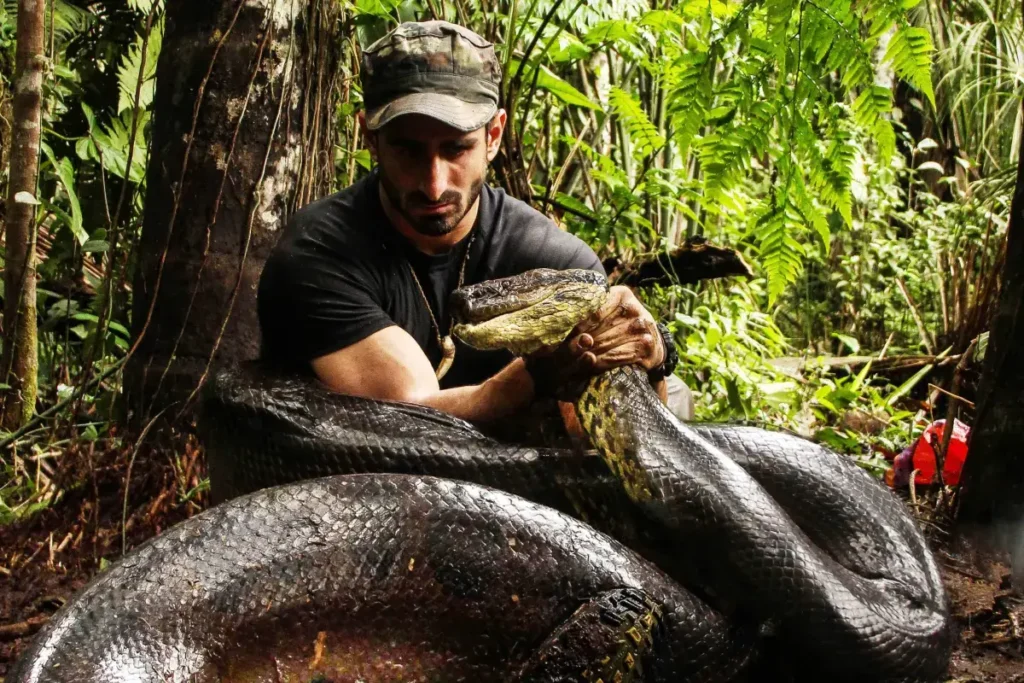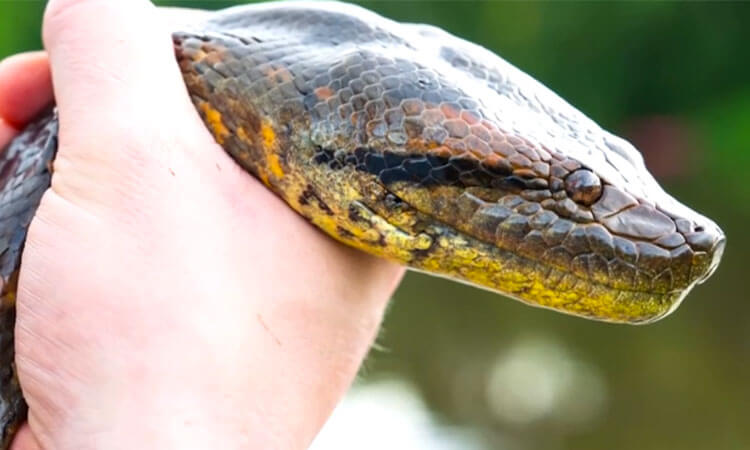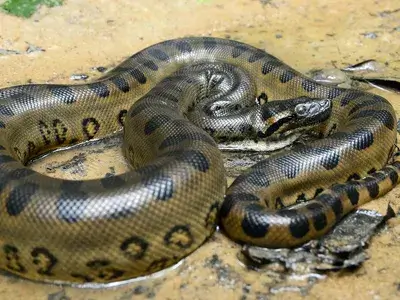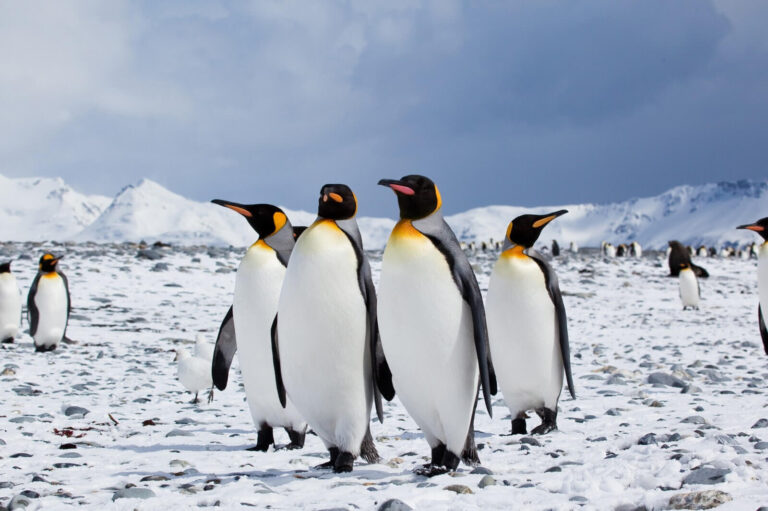An In-Depth Guide to the Anaconda: The World’s Largest Snake
The Anaconda is one of the most fascinating and formidable snakes in the world. Known for its incredible size and strength, this giant serpent has captured people’s imaginations worldwide. This guide explores the Anaconda’s scientific classification, physical characteristics, habitat, behavior, diet, reproduction, predators, and conservation status. We will also delve into its evolutionary history, relationship with humans, and some interesting facts about these remarkable reptiles.
Contents
Scientific Classification
Anacondas belong to the boa family, Boidae, and are part of the genus Eunectes. There are four recognized species of Anaconda:
- Green Anaconda (Eunectes murinus): The largest and most well-known species.
- Yellow Anaconda (Eunectes notaeus): Smaller and found in the southern regions of South America.
- Dark-Spotted Anaconda (Eunectes deschauenseei): Less common and found in the northeastern parts of South America.
- Bolivian Anaconda (Eunectes beniensis): A rare species found in Bolivia.
Taxonomic Hierarchy:
- Kingdom: Animalia
- Phylum: Chordata
- Class: Reptilia
- Order: Squamata
- Family: Boidae
- Genus: Eunectes
Physical Characteristics

Anacondas are known for their massive size and muscular build. The Green Anaconda is the largest snake in the world in terms of weight and girth and is one of the longest.
- Size: Green anacondas can reach up to 30 feet (9 meters) and weigh over 550 pounds (250 kg). The Yellow Anaconda, in contrast, grows up to 15 feet (4.5 meters) long.
- Color and Pattern: Green anacondas are typically olive-green with dark blotches along their bodies, providing excellent camouflage in their swampy environments. Yellow anacondas have yellow and brown patterns, while Dark-Spotted and Bolivian anacondas have distinct markings suited to their habitats.
- Body Structure: Anacondas have thick, muscular bodies designed for constriction. They have large heads with sharp, curved teeth for grasping prey.
- Eyes and Nostrils: Positioned on the top of their heads, allowing them to see and breathe while mostly submerged in water.
Habitat and Distribution
Anacondas are primarily found in South America, inhabiting tropical rainforests, swamps, marshes, and slow-moving streams.
- Preferred Habitats thrive in aquatic environments such as the Amazon and Orinoco basins. The dense vegetation and water bodies provide them ample cover and prey access.
- Geographical Range: Green anacondas are mainly found in the Amazon River Basin, while Yellow anacondas are more common in Paraguay, Uruguay, and southern Brazil.
Behavior and Lifestyle

Anacondas are solitary and spend most of their time in water. They are nocturnal and highly secretive, which makes it difficult for them to study in the wild.
- Swimming Abilities: Anacondas are excellent swimmers and can move swiftly in water, their primary hunting ground.
- Ambush Predators rely on stealth and surprise, often lying in wait for prey near water bodies.
- Territoriality: Anacondas are not particularly territorial but tend to remain within a familiar range where they know the hunting grounds well.
Diet and Hunting Strategies
Anacondas are apex predators and primarily consume a carnivorous diet, which includes a wide range of animals.
- Diet: Their diet consists of fish, birds, mammals (such as capybara, deer, and caimans), and occasionally other reptiles.
- Hunting Strategy: Anacondas are constrictors. They wrap their muscular bodies around their prey and squeeze until the animal suffocates. They then swallow their prey whole, thanks to their stretchy ligaments and powerful jaw muscles.
- Feeding Frequency: Due to their slow metabolism, anacondas can go weeks or months without eating after a large meal.
Reproduction and Lifespan
Anacondas are ovoviviparous, meaning they give birth to live young instead of laying eggs.
- Mating Season: Occurs during the dry season, typically from April to May.
- Mating Behavior: Males use pheromones to locate females. Multiple males may attempt to mate with a single female, resulting in a “breeding ball” where they compete for her attention.
- Gestation Period: Approximately 6 to 7 months.
- Offspring: Females give birth to 20-40 live young, but litters can be as large as 100. Newborn anacondas are around 2 feet long and are independent from birth.
- Lifespan: In the wild, anacondas can live up to 10 years, but they can live longer in captivity, sometimes reaching 30 years.
Predators and Threats
Despite their size, anacondas do have natural predators and face several threats.
- Natural Predators: Jaguars, caimans, and large birds of prey (for young anacondas) may hunt or challenge them.
- Human Threats: Anacondas are often hunted by humans for their skin and sometimes killed due to fear or to protect livestock.
- Environmental Threats: Habitat destruction and water pollution pose significant risks to their populations.
Conservation Status
The conservation status of anacondas varies by species.
- Green Anaconda: Listed as “Least Concern” by the IUCN, their populations are declining in some areas due to habitat loss and hunting.
- Yellow Anaconda: They are not currently listed as threatened but are subject to hunting and habitat changes.
- Conservation Efforts: Some regions have implemented protective measures to preserve anaconda habitats and regulate hunting practices.
Interesting Facts about Anacondas
- Anacondas can stay underwater for up to 10 minutes without coming up for air.
- The Green Anaconda is the heaviest snake in the world.
- They can consume up to half their body weight in a single meal.
- Despite popular myths, anacondas do not typically hunt humans.
Evolutionary History
The Anaconda’s evolutionary history can be traced back millions of years to ancient reptiles. Anacondas, like other boas, are considered “primitive” snakes because they retain vestigial structures like pelvic spurs, which are remnants of hind limbs. This indicates that they evolved from ancestors that once had limbs.
- Ancestry: Anacondas likely evolved from early constrictor snakes, adapting to aquatic environments to exploit new prey sources and avoid competition.
- Adaptive Traits: Their massive size, powerful muscles, and aquatic lifestyle are all adaptations that have allowed them to become apex predators in their habitats.
Anacondas and Humans
Anacondas have a complex relationship with humans, often marked by fear, fascination, and misunderstanding.
- Folklore and Myth: Anacondas have been featured prominently in South American folklore, and they are often depicted as mythical creatures with supernatural powers.
- In Modern Culture, Anacondas are popular subjects in movies, documentaries, and literature, often portrayed as menacing giants.
- Human-Anaconda Conflicts: Although attacks on humans are rare, occasional reports of encounters have occurred. Generally, anacondas avoid humans and pose little threat.
Conclusion
The Anaconda is a fascinating reptile that captivates and intrigues people worldwide. From its massive size and unique adaptations to its complex relationship with humans and the ecosystem, the Anaconda remains one of the most remarkable snakes on the planet. Understanding these giants of the snake world helps us appreciate the diversity and complexity of life in the world’s rainforests and the importance of preserving their habitats for future generations.
- Are Rottweilers Good With Kids? Reasons & Training Tips - 17 September 2025
- How Long Are Dogs Pregnant: Complete Guide - 16 September 2025
- German Shepherd Doberman Mix: Info, Pictures, Care & More - 11 September 2025







